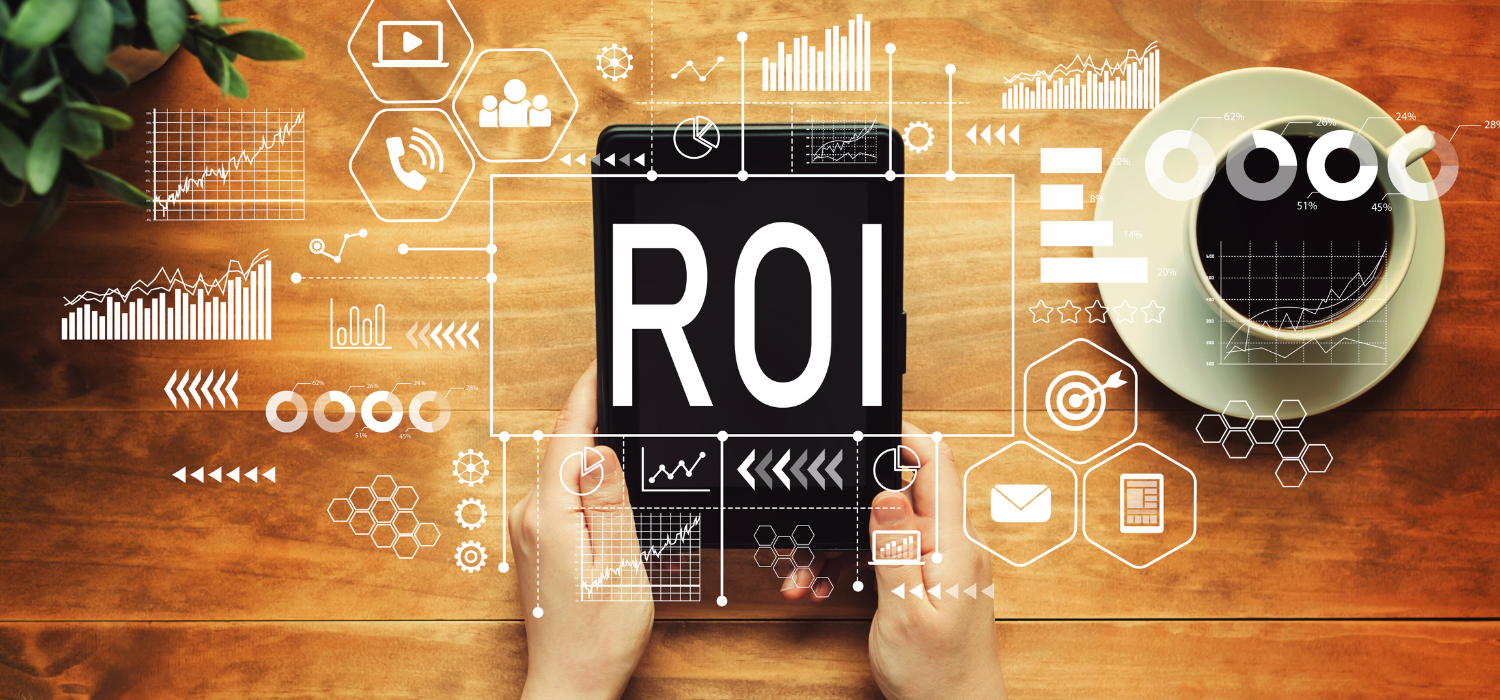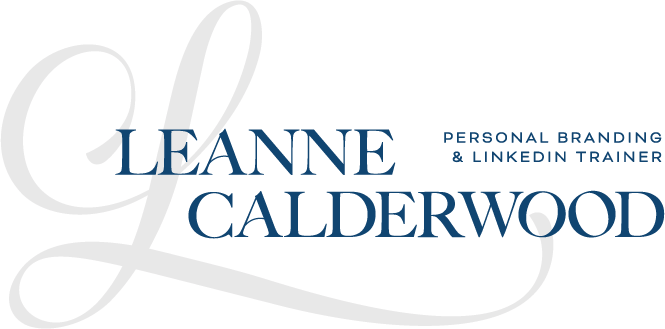In a world where everyone's work is just a click away, standing out isn’t just…

Unlocking the Power of Personal Branding: Discover the Unseen ROI
In a world where digital footprints matter more than ever, personal branding has shifted from a luxury to a necessity. But here’s the catch – many doubt its return on investment (ROI). Are you one of those skeptics, sitting on the fence, unsure if crafting your personal brand is worth the effort? Let’s debunk this myth and explore the tangible benefits of personal branding.
What is Personal Branding?
In the realm of professional growth and business success, “Personal Branding” and “Return on Investment (ROI)” are two pivotal concepts.
✨ Personal branding is the practice of marketing oneself and one’s career as a brand. It’s an ongoing process of developing and maintaining a reputation and impression of an individual, group, or organization.
✨ Whereas ROI, an acronym for Return on Investment, measures the efficiency or profitability of an investment. In the context of personal branding, ROI refers to the tangible and intangible benefits gained in return for the time, effort, and resources invested in cultivating one’s personal brand. These benefits can range from enhanced professional opportunities and network expansion to increased credibility and industry influence.
The Unmistakable ROI of Personal Branding
In today’s digitally interconnected world, personal branding has emerged as a crucial element for professional success. It’s no longer just a buzzword; it’s a powerful tool that can yield substantial benefits. But what exactly is the ROI of personal branding? How does it translate into real-world advantages? The return on investment from personal branding is multifaceted, impacting various aspects of professional life. From boosting your career trajectory to expanding your network, the effects of a well-crafted personal brand are both profound and far-reaching.
Let’s explore four key areas where the ROI of personal branding becomes unmistakably clear:
-
Increased Trust and Credibility
A strong personal brand establishes you as an authority in your field. When people see your consistent, authentic presence, they’re more likely to trust you. This trust translates into credibility, a currency in today’s market that can open doors to new opportunities and partnerships.
-
Enhanced Networking Opportunities
Your personal brand is a magnet for connections. It draws like-minded professionals and potential clients towards you, expanding your network effortlessly. These connections often lead to collaborations, referrals, and business growth that you wouldn’t have accessed otherwise.
-
Better Job Prospects
For job seekers or career climbers, a well-cultivated personal brand can be a game-changer. Employers are increasingly looking at candidates’ online presence to gauge their fit. A strong personal brand can set you apart from the competition, highlighting your unique skills and experiences.
-
Higher Perceived Value
A solid personal brand can justify higher rates for your services or products. When you’re seen as an expert, people are willing to pay more for your expertise. This perceived value can significantly increase your income over time.
Pros and Cons of Personal Branding
Embarking on the journey of personal branding is like navigating a landscape filled with opportunities and challenges. It’s a powerful strategy for professional growth, yet it comes with its own set of considerations. Understanding the pros and cons of personal branding is essential for anyone looking to harness its full potential. While the advantages can significantly elevate your career and visibility, it’s also important to be mindful of the challenges and how to effectively address them.
👉 Pros:
- Distinctiveness: Your personal brand helps you stand out in a crowded market.
- Control: You have control over how you’re perceived professionally.
- Flexibility: It allows you to pivot or expand into different areas while maintaining a cohesive identity.
👉 Cons:
- Time Investment: Building a personal brand requires time and consistent effort.
- Vulnerability: Putting yourself out there can expose you to criticism or negative feedback.
- Maintenance: Your brand needs regular updating to remain relevant and effective.
Maximizing ROI with Efficient Branding Practices
Maximizing the ROI of your personal brand requires a blend of creativity, consistency, and smart practices. It’s about making the most of your resources and efforts to yield the greatest benefits. In this section, we’ll explore some of the most efficient branding practices that can amplify your personal brand’s impact and return on investment.
-
Content Creation
One of the best ROI practices is content creation. Share your knowledge through blogs, videos, or podcasts. This not only showcases your expertise but also improves your visibility online, enhancing SEO.
-
Networking
Engage with your industry community. Attend events, join online forums, and connect on social media. These interactions not only boost your brand but also provide valuable insights and opportunities.
-
Consistency Across Platforms
Ensure your message and visual branding are consistent across all platforms. This consistency helps build recognition and trust, reinforcing your brand with every interaction.
-
Personalized Interaction
Engage with your audience. Reply to comments, emails, and messages. Personalized interaction can transform followers into loyal supporters and advocates for your brand.
-
Continuous Learning and Adaptation
Stay updated with industry trends and continuously refine your brand. This adaptability keeps your brand relevant and appealing.
The Biggest Bang for Your Buck: Practical Branding Strategies
In the quest to amplify your personal brand, it’s crucial to focus on strategies that not only align with your strengths but also deliver high ROI. Here are some tangible branding examples that can significantly elevate your brand’s impact:
-
Leveraging LinkedIn for Thought Leadership
– Tangible Example: Regularly publish articles or posts on LinkedIn that provide unique insights into your industry. For instance, if you’re in the B2B sector, share case studies or success stories demonstrating your expertise. This not only enhances your credibility but also increases visibility among your professional network.
– ROI: Increased visibility on a professional platform, leading to more connections, job offers, or business opportunities.
-
Strategic Blogging
– Tangible Example: Create a blog where you consistently post about topics relevant to your niche. For example, if your focus is on introverted leaders, write posts that offer tips on how introverts can excel in leadership roles. Use SEO strategies to ensure your blog ranks well in search results.
– ROI: Improved search engine rankings leading to higher website traffic, potential lead generation, and establishing authority in your niche.
-
Engaging Video Content
– Tangible Example: Start a YouTube channel or utilize Instagram Stories to share short, engaging video content. These could be tips, day-in-the-life videos, or Q&A sessions that humanize your brand and make you relatable to your audience.
– ROI: Increased engagement and followership, leading to higher brand recognition and opportunities for monetization through partnerships or sponsorships.
-
Interactive Webinars and Workshops
– Tangible Example: Host webinars or online workshops on topics like “Personal Branding for Introverts.” Use these platforms to share valuable content while interacting directly with your audience.
– ROI: Direct engagement with potential clients or customers, leading to higher conversion rates for your services or products.
-
Consistent Social Media Presence
– Tangible Example: Regularly post on social media platforms like Twitter or Instagram with a mix of content types – from inspirational quotes to behind-the-scenes peeks. For example, share a weekly tip on personal branding every Monday to establish consistency.
– ROI: Steady growth in followers and engagement, leading to increased brand visibility and opportunities for collaborations.
-
Guest Appearances on Podcasts
– Tangible Example: Appear as a guest on popular podcasts in your industry. Share your insights and experiences, providing listeners with valuable takeaways.
– ROI: Access to a new audience, increased recognition in your field, and potential traffic to your own platforms.
-
Networking and Community Building
– Tangible Example: Actively participate in or create online communities (like LinkedIn groups or Facebook communities) related to your niche. Engage in discussions, offer advice, and share resources.
– ROI: Building a loyal community that trusts your expertise, potentially leading to word-of-mouth referrals and client acquisition.
By focusing on these tangible strategies, you’ll be investing in high-ROI activities that not only build your personal brand but also create a lasting impact in your professional world. It’s about quality, not just quantity. Each effort should be purposeful and aligned with your overall branding goals.
Measuring the ROI of Your Personal Brand
While the benefits of a strong personal brand are clear, understanding how to measure its return on investment (ROI) can be less straightforward. However, with the right metrics and tools, you can effectively gauge the success of your branding efforts. Here’s how:
-
Track Your Online Engagement
– Metrics: Monitor likes, shares, comments, and views on your social media posts, blog articles, or LinkedIn publications.
– Tools: Use built-in analytics on social platforms or tools like Google Analytics for your blog/website.
– ROI Indication: Increased engagement indicates higher interest and visibility, translating to brand growth.
-
Assess Website Traffic
– Metrics: Look at the number of visitors, page views, and the source of traffic on your website.
– Tools: Google Analytics is a powerful tool for this purpose.
– ROI Indication: An increase in traffic, especially from organic search, suggests that your brand is gaining traction and attracting attention.
-
Evaluate Networking Growth
– Metrics: Keep tabs on the growth of your professional network, including new connections on LinkedIn and other platforms.
– ROI Indication: A growing network means your brand is reaching more people, enhancing potential opportunities.
-
Monitor Lead Generation and Conversion Rates
– Metrics: Track the number of leads generated through your personal brand (e.g., inquiries about your services) and the conversion rate of these leads.
– Tools: CRM software can be useful for tracking these metrics.
– ROI Indication: An increase in leads and conversions directly indicates the financial impact of your personal brand.
-
Feedback and Testimonials
– Metrics: Collect and analyze feedback or testimonials from clients or peers.
– ROI Indication: Positive feedback and endorsements reinforce the value and credibility of your brand.
-
Career Advancements
– Metrics: Note any career progressions, such as job offers, promotions, speaking engagements, or collaborations.
– ROI Indication: These advancements can be linked to the effectiveness of your personal branding efforts.
-
Content Reach and Influence
– Metrics: Measure the reach of your content, including shares and mentions by others, especially by influencers or thought leaders in your industry.
– Tools: Social media analytics tools, content management systems.
– ROI Indication: A wider content reach signifies greater influence and brand authority.
-
Personal Goals Alignment
– Metrics: Reflect on how well your personal branding aligns with and supports your personal and professional goals.
– ROI Indication: Achieving your set goals can be a qualitative measure of your brand’s effectiveness.
By systematically measuring the ROI of your personal branding efforts, you can make data-driven decisions to refine and enhance your strategy. And remember, building a personal brand is a marathon, not a sprint. It requires time, consistency, and adaptability.
If you’re looking to start this journey or elevate your current brand, join my upcoming webinar. Together, we’ll explore the art of personal branding and how you can measure its impact on your professional life.
Learn more about “Time To Shine – 5 Reasons Why Personal Branding is MUST for Your Career in 2024” here.

RELATED – Everyday Expertise: Leveraging Your Life Experiences for a Stronger Personal Brand
RELATED – Changing Up Your Personal Brand
RELATED – Personal Branding Activities – In 10 Minutes a Day
RELATED – Personal Branding and Its Importance for B2B Professionals



